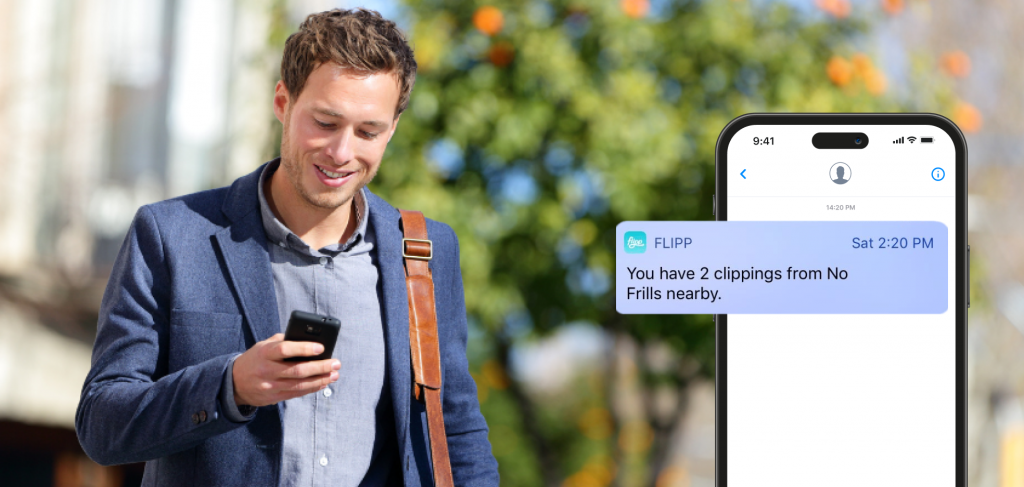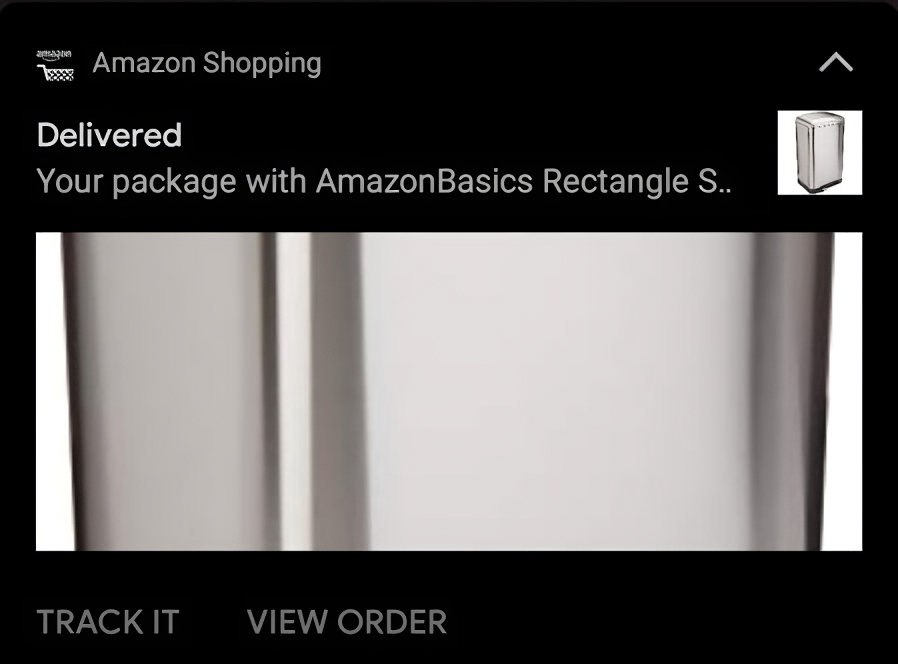
On a daily basis, the average American receives 46 push notifications among all the other distractions throughout their workday. That’s more than one every 20 minutes during your eight hours at work. How many of us actually pay attention to each of those?
In this information age, you need timely, relevant push notifications that stand out. They should offer value, entertain, create a sense of urgency, or drive action. Those are the hallmarks of a successful push notification campaign.
In this article we’ll explore push notification benefits, best practices to boost engagement and conversions, and common mistakes to avoid for successful marketing campaigns.
The benefits of push notifications for marketing
Push notifications are the gentle “push” your users need to interact and engage with your brand. Let’s take a look at some of the many benefits real-time alerts have to offer:
- Increase user engagement – Communicate with users in real-time, which keeps them engaged with your app or service, similar to how Sprout Social alternatives can offer different features to boost engagement across platforms.
- Enhance the customer/user experience – Provide users with relevant, timely information, offers, reminders, or updates to bring value and make their lives easier.
- Drive higher retention rates – Regular, relevant notifications keep your app or business at the top of users’ minds, which can reduce the churn rate.
- Improve conversions – Special promotions, discounts, or limited-time offers can drive sales and conversions.
- Achieve a higher ROI – Push notifications are cost-effective and can reach users instantly, so they can offer a higher ROI.
- Increase traffic and usage – Notifications can drive users to specific app sections, new content, or web pages.
- Gather valuable data – Data on how users interact with notifications can help you understand user preferences and behavior.
- Boost brand loyalty – Offering exclusive deals and content to users helps foster a sense of community and loyalty.
Types of push notifications
There are several types of push notifications, according to their intended purpose or audience. The intent will determine the notification’s content, cadence, and more.
Here are some of the most common types:
- Alert notification: Important notifications that don’t vanish until the user manually deletes them – can inform the user of emergencies or other important information
- Back-in-stock notification: Lets the customer know that an item they liked or saved that was previously out of stock is back in stock
- Abandoned cart notification: Notifies the customer that they left items in their cart without purchasing them
- Update notification: Informs the customer of an update or new software version
- Informative notification: Provides the customer with relevant information
- Discount notification: Offers the customer a discount
Best practices for effective marketing push notifications
70% of app users say that push notifications are very useful. But how can you make your stand out against competitors, appeal to users’ needs, and better resonate with your customers?
Before finalizing a strategy, it’s imperative to clearly define your business objectives. That way, you can ensure your strategy aligns with those goals.
The following best practices will help you optimize your notifications so they engage your audience instead of annoying or confusing them.
1. Include a CTA
Actionable CTAs can boost push notification outcomes. And it makes sense. If you fail to tell users what they need to do, they’re less likely to take action.
So, CTAs help make your push notifications actionable, whether you’re telling users to shop now, read more, or claim an offer.
2. Provide incentives
Give users a reason to tap your push notification. Incentives include:
- Freebies and giveaways
- Gamification incentives
- Early access to sales
- Exclusive discounts
- Event-based offers
- Limited time offers
- Milestone rewards
- Loyalty rewards
Take Chipotle, for example. It’s hard to pass up free guac.

Screenshot provided by the author
3. Use emojis
Push notifications with emojis achieve an 85% open rate. Emojis can make messages more visually appealing, convey emotion, and add a human element.
They can also help notifications stand out because they’re eye-catching and engaging.
4. Time it right
According to Localytics, the best times to send push notifications are during lunch or at the end of the day.

Sending notifications when users are more likely to see them and act on them will help boost your open rate.
Every customer base is different, so consider your industry and business. If you already have data available on open rates and their correlation with timing, check it to see the most active times.
5. Onboard new customers/users
Use push notifications to onboard new customers and app users. This helps them understand the value of your product or app, and how best to use it to their advantage.
Examples of notifications you can send for onboarding include:
- Welcome notifications (Ex: 🎉 Welcome! We’re excited to have you. Tap to get started)
- Guide to key features (Ex: Explore 🔍 our top features. Tap here for a tour.
- Profile completion (Ex: Complete your profile 👤 to personalize your experience. Tap to add your details)
- First-time actions (Ex: Add your first item to the cart 🛒 and enjoy a 10% discount. Tap to start shopping.
- Interactive tutorials (Ex: Learn how to use [specific feature] in five minutes. Tap to start the tutorial.)
- Milestone celebrations (Ex: 🏆 Congrats on completing your first task! Keep going to unlock more rewards.)
- Helpful tips (Ex: 💡 Tip of the day: Use our advanced search to find what you need.
- Reminders for incomplete actions (Ex: ⏳ You haven’t finished setting up your account. Open the app to complete and unlock more features!)
6. Use geolocation
Using geolocation can help you provide contextually relevant information to customers based on their location.
For even more specific audience targeting, try geofencing. This technique is perfect for targeting smaller areas with time-sensitive promotions. For example, a restaurant would use geofencing to promote a limited-time offer for a single location.
7. Pique curiosity
One way to get your target audience to open push notifications is to get them curious.
Here are some tips for piquing curiosity:
- Use questions and hints to create a sense of mystery.
- Highlight that your content or offer is exclusive and only available to those who tap the notification.
- Announce new features or updates in a way that highlights the benefits without giving away all the details upfront.
- Offer a sneak peek of a new feature or product by linking to a product demo that gives users a hands-on experience and sparks their curiosity.
8. Send reminders
Send reminders to keep customers engaged and prompt them to take action.
You can remind them about upcoming events, incomplete tasks, appointments, abandoned carts, special offers, or important deadlines. It all depends on your business and what you offer.
But the key is to time your reminders right. Send your reminders on time so that customers can take advantage of them and not miss out on whatever you’re offering.
9. Add rich media
Like emojis, rich media adds visual interest to your push notifications, which helps draw customers’ eyes to them.

Screenshot provided by the author
Include high-quality images to showcase your products, services, promotions, or events. Use animated GIFs to add an element of excitement or humor to your notifications.
Consider adding interactive buttons to allow users to take specific actions directly from the push notification, such as RSVPing to an event or completing a survey.
10. Use segmentation
Segmenting your notifications makes sure that the right message goes to the right people. This is critical for increasing open, click-through, and conversion rates.
Also, users expect personalization now, so if you want them to pay attention to your notifications instead of someone else’s, you’d better use segmentation and personalization.
11. Personalize your message
Personalized push notifications can achieve up to a 260% increase in engagement compared to general ones.
And more personalized notifications can enhance the overall user experience, making customers want to keep engaging with your brand.
Here’s how to weave personalization into your messages:
- Address users by their name.
- Recommend products based on past purchases.
- Make recommendations based on location.
You can also send notifications recognizing milestones, such as birthdays and anniversaries, which helps build customer loyalty.
12. Ask for feedback or a review
Getting customers to leave their feedback via email is a great way to uncover their thoughts, feelings, and opinions about your brand and product.
However, you may get a more immediate response by asking for feedback in your push notifications. Why? Because you’re reaching them at the right moment, such as after they’ve completed a transaction or interacted with a specific feature on their mobile device.
This allows you to solicit more accurate, detailed feedback while the experience is still fresh in their minds.
13. Promote a limited-time offer
Use push notifications to promote limited-time offers and drive customers to take immediate action.
Words like “today,” “only,” and “limited time” create a sense of urgency and evoke a fear of missing out (FOMO).
Avoid these common push notification mistakes
There are many strategies you can use to make your campaigns stand out. However, there are also certain mistakes that can make your campaigns less effective.
Here are the most common mistakes to avoid so your campaign can see success:
- Overwhelming customers with too many notifications, too often: Be mindful of how frequently you’re sending notifications. Limit it to three to five notifications per week.
- Sending irrelevant or generic messages: Personalize your notifications based on user data and preferences. Tailor those messages to specific segments or user personas.
- Sending notifications at the wrong time: Consider time zones, preferences, and engagement metrics to send your push notifications at optimal times.
- Ignoring opt-out preferences: Make it easy for users to opt out of notifications with clear instructions.
- Neglecting A/B testing: Use A/B testing to experiment with different variables. Then, measure the impact on key metrics like open rates and conversions.
- Not providing value: Make sure each notification provides value to customers, whether it’s relevant information, exclusive offers, or personalized recommendations.
Wrapping up
Consumers enjoy interacting with their favorite brands online. And most of them do so on their mobile devices. This is part of what makes push notifications such a tremendous opportunity for the brands that meet the challenge.
The key to success is the best practices we explained and avoiding the common mistakes others make. Connect with your audience in personalized, authentic ways and show them your appreciation with value, feedback requests, and timely reminders.
Finally, consider pairing your push notification marketing campaign with the power of SMS with Textmagic. That way, you can ensure your messages reach customers and that they don’t miss important offers. Start your free trial today!
Frequently Asked Questions (FAQs)
Push notifications are short, clickable messages sent directly to a user’s device (mobile or desktop) to deliver timely updates, promotions, or personalized content, often used to re-engage users or drive conversions.
Push marketing refers to proactive strategies used to promote products or services to consumers. Example: sending a text message or displaying a pop-up ad to highlight a new product.
When used strategically, push notifications can significantly improve engagement, retention, and conversion rates. However, overuse or irrelevant content can lead to user opt-outs.
Go to your device’s settings > Notifications, find the relevant app, and enable “Allow Notifications.” In browsers, you can manage permissions through the site settings.
Yes, mobile push notifications typically require an app. However, web push notifications can be sent through supported browsers without an app.
Related articles
How to create engaging FAQ pages (with examples & templates)
Forget about boring FAQ pages. The tips and template...
Bulk SMS marketing: Benefits, strategies, and best practices
Bulk text messaging is an effective way to reach a w...
9 Results-driven customer engagement models
Offering a great product or service is no longer eno...
6 Proven sales funnel templates to accelerate your growth
Discover the top sales funnel templates that will h...
10 Examples of critical success factors to transform your support
Customer service is vital for success, often surpass...




